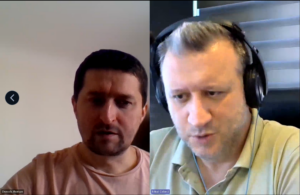Electric power systems like Ukraine’s integrated power system (IPS) are typically complex systems that require mathematical models to guide decision-makers in planning and operation.
The high quality of these mathematical models, which basically are steady-state and dynamic models, is essential to obtain accurate and reliable power system analysis. For this reason, steady-state and dynamics models should be suitable to demonstrate the actual behavior of the power system. They must be validated to ensure that they reflect real system topology and connectivity and that they can accurately replicate system operation.

To develop Ukrenergo engineers’ in-house capability in planning and operation of Ukraine’s IPS, the USAID Energy Security Project (ESP) conducted six workshops on dynamic power system modeling in line with the European Network of Transmission System Operators for Electricity (ENTSO-E) guidelines during September-October 2023.
In the workshops, an expert from EPRA company, Erkut Cebeci, explained to participants how to create a custom model of a power generation unit from scratch to perform a dynamic model analysis through the DigSILENT PowerFactory software and use the available functionalities to cover engineers’ needs best.
USAID ESP also explained in a real example of a power unit the detailed structure of each part and controller and how they interact. Representatives of Ukrenergo learned how to utilize the external measurement signals as an input for the system and as a reference to evaluate the simulation results. Based on the results, participants tried to calculate the optimum parameters for the controllers of power units.
For reference: DigSILENT PowerFactory software is an application for analyzing generation, transmission, distribution, and industrial systems. It combines reliable and flexible system modeling capabilities, state-of-the-art algorithms, and a unique database concept.
